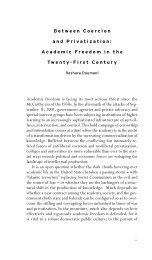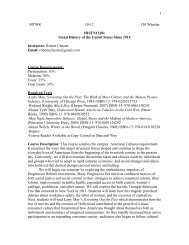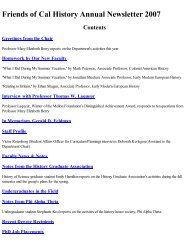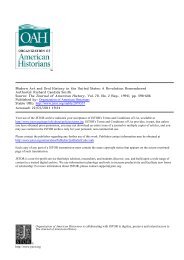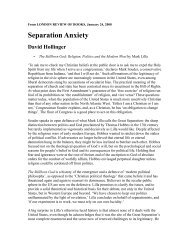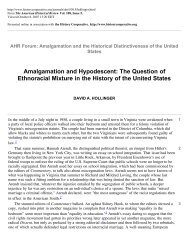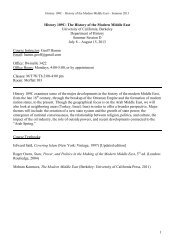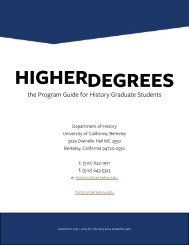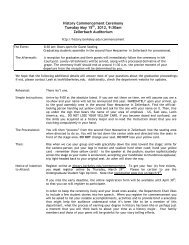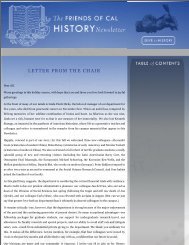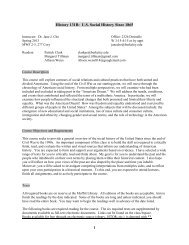My Grandmother and Other Stories: Histories of the Palestinians as ...
My Grandmother and Other Stories: Histories of the Palestinians as ...
My Grandmother and Other Stories: Histories of the Palestinians as ...
Create successful ePaper yourself
Turn your PDF publications into a flip-book with our unique Google optimized e-Paper software.
<strong>the</strong> Sisters <strong>of</strong> Zion, <strong>and</strong> Bishop Gobat’s schools are leading examples). Sakakini,<br />
aided by advocates <strong>of</strong> <strong>the</strong> Arab Enlightenment such <strong>as</strong> Nakhleh Zureik, succeeding<br />
in establishing an educational system that challenged <strong>the</strong> confessional system <strong>and</strong><br />
attracted hundreds <strong>of</strong> students from Palestine who chose to avoid <strong>the</strong> sectarianism <strong>of</strong><br />
<strong>the</strong> Christian missionaries. Al-Dusturiyyah College (later known <strong>as</strong> al-Wataniyyah<br />
College) w<strong>as</strong> established in 1909 in <strong>the</strong> spirit <strong>of</strong> <strong>the</strong> new Ottoman constitution,<br />
b<strong>as</strong>ically <strong>as</strong> a protest against <strong>the</strong> (Greek) ecclesi<strong>as</strong>tical orthodox hierarchy. It w<strong>as</strong> in<br />
this college that Ihsan received his b<strong>as</strong>ic education <strong>and</strong> with whose graduates <strong>and</strong><br />
teachers he continued to <strong>as</strong>sociate while in <strong>the</strong> military.<br />
For <strong>the</strong> military elite, <strong>the</strong> Imperial War Academy in Istanbul <strong>and</strong> regional military<br />
colleges in cities like Dam<strong>as</strong>cus <strong>and</strong> Baghdad introduced a select few students into a<br />
‘national’ alternative to <strong>the</strong> missionary schools. But <strong>the</strong> o<strong>the</strong>r intellectual current that<br />
is overlooked w<strong>as</strong> <strong>the</strong> modernist Ottoman educational system introduced after <strong>the</strong><br />
revolution <strong>of</strong> 1908. Most public schools in Jerusalem <strong>the</strong>n began to introduce a secular<br />
curriculum along European lines. The most important public school in <strong>the</strong> city w<strong>as</strong><br />
al-R<strong>as</strong>hidiyya, which graduated leading figures <strong>of</strong> reform. Individual reformers such<br />
<strong>as</strong> Sheikh Muhammad al-Salih were inspired by <strong>the</strong> Islamic reformism <strong>of</strong> Afghani <strong>and</strong><br />
Abdo. Sheikh al-Salih established al-Rawda al-Faiha’ which took <strong>the</strong> daring step <strong>of</strong><br />
converting all curriculum in history, geography, literature <strong>and</strong> religious studies from<br />
Turkish to Arabic. 54<br />
The most important Ottoman college in Palestine in Ihsan’s days w<strong>as</strong> al-Salihiyyah,<br />
established at Jamal P<strong>as</strong>ha’s initiative in <strong>the</strong> grounds <strong>of</strong> St. Anne’s, a crusader<br />
church near <strong>the</strong> Haram area, which w<strong>as</strong> confiscated from <strong>the</strong> French during <strong>the</strong> war.<br />
Salahuddin-i Eyyubi Kulliyye-i Islamiyyesi, <strong>as</strong> it w<strong>as</strong> known in Turkish, w<strong>as</strong> Jamal’s<br />
ambitious attempt to train a generation <strong>of</strong> pro-Ottoman Arab intelligentsia. The college<br />
<strong>of</strong>fered two ph<strong>as</strong>es <strong>of</strong> 12 years <strong>of</strong> secondary studies, <strong>and</strong> w<strong>as</strong> <strong>the</strong>refore a university-level<br />
institute whose curriculum w<strong>as</strong> a mixture <strong>of</strong> <strong>the</strong>ological studies <strong>and</strong> <strong>the</strong> latest secular<br />
disciplines available in that period. 55 The college w<strong>as</strong> established in 1913, administered<br />
by three protégés <strong>of</strong> Jamal P<strong>as</strong>ha, Abdel Aziz Shawish, Shakib Arsalan <strong>and</strong> Abdul Qadir<br />
al-Moghrabi, who were all early supporters <strong>of</strong> <strong>the</strong> Young Turk movement <strong>and</strong> champions<br />
<strong>of</strong> Ottoman decentralization. But <strong>the</strong> most important figure in Salahiyyah w<strong>as</strong> Rustum<br />
Haidar (1886-1940) who established <strong>the</strong> secret Arab society Al-Jam’iyyah al-Arabiyyah<br />
al-Fatat in 1911 with Awni Abdel Hadi <strong>and</strong> Ahmad Qadri. 56 Haidar appears prominently<br />
in Turjman’s diary <strong>as</strong> a friend <strong>of</strong> Sakakini <strong>and</strong> a fierce exponent <strong>of</strong> Arabism in <strong>the</strong><br />
Ottoman state. In 1918, he escaped with Sakakini to Jabal Druze from Dam<strong>as</strong>cus to<br />
join <strong>the</strong> Arab Rebellion under <strong>the</strong> leadership <strong>of</strong> Prince Faisal. Two o<strong>the</strong>r prominent<br />
intellectuals from Turjman’s circle <strong>of</strong> friends also taught at <strong>the</strong> Salahiyyah: Is’af al-<br />
N<strong>as</strong>h<strong>as</strong>hibi <strong>and</strong> Adel Jaber. The former taught Arabic, while <strong>the</strong> latter taught French <strong>and</strong><br />
geography. Sakakini also taught at <strong>the</strong> Salahiyyah when his busy schedule at his own<br />
college allowed him.<br />
Jerusalem Quarterly 30 [ 43 ]



